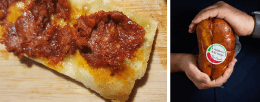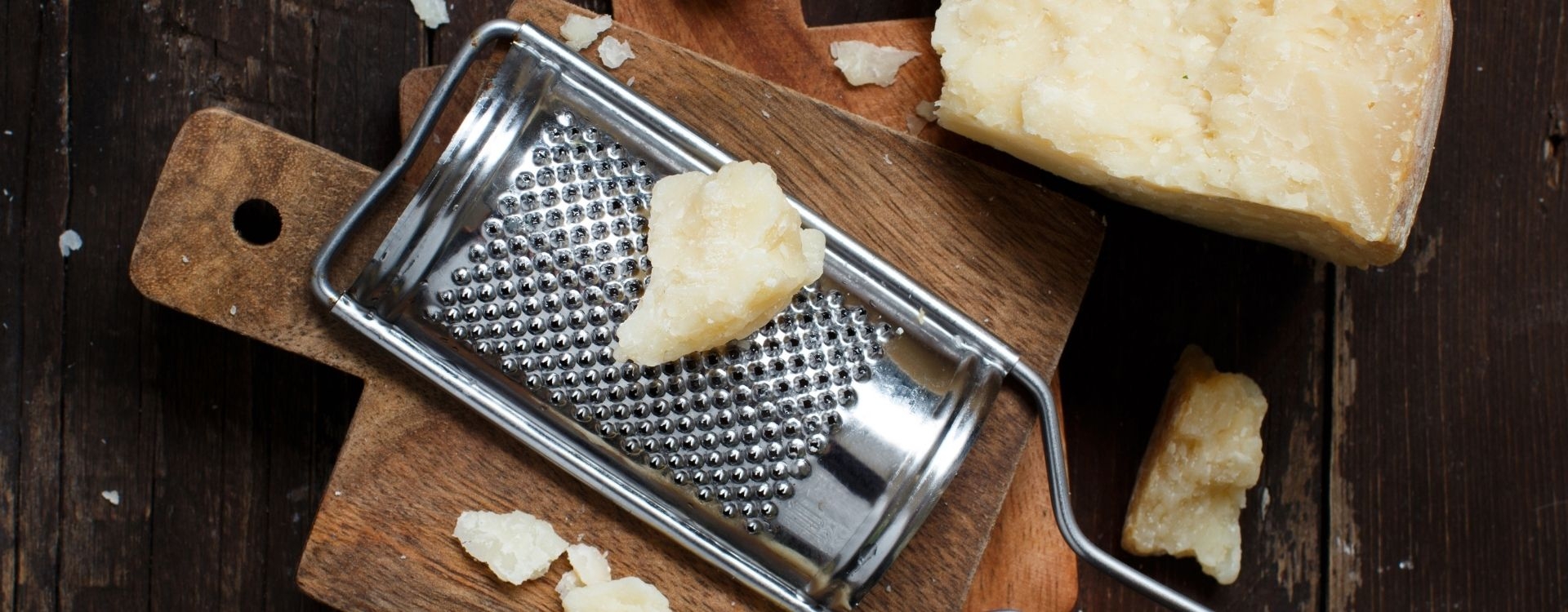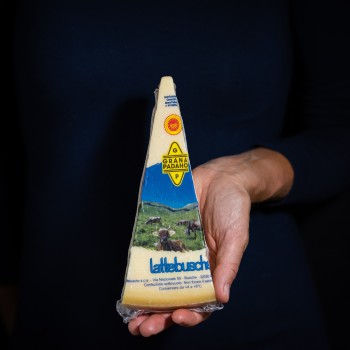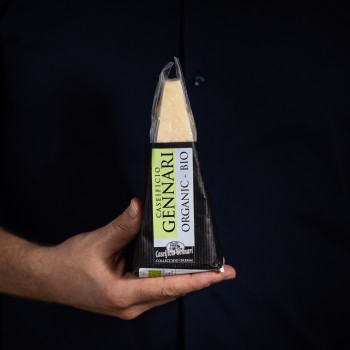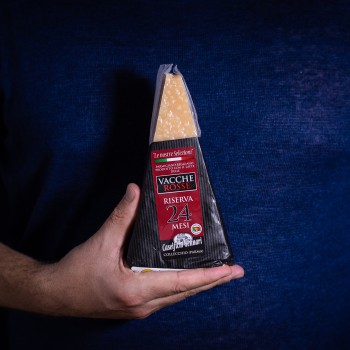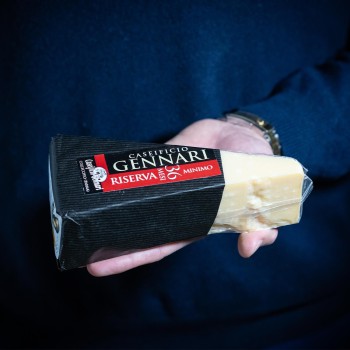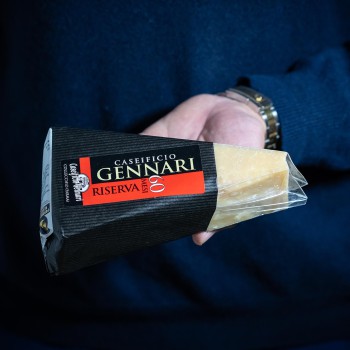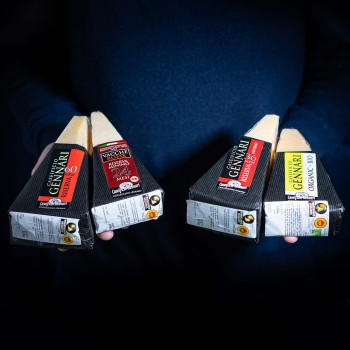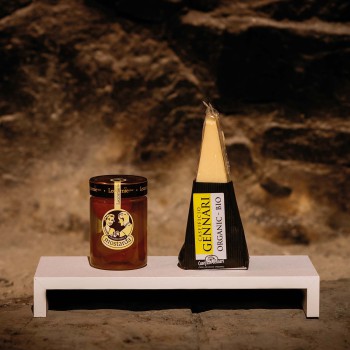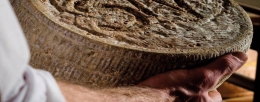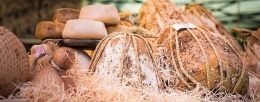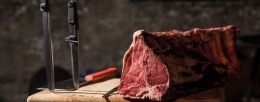Ferragosto is approaching, whip out the picnic baskets! What are we taking? All quick preparations to make and practical to carry and eat - dishes and cutlery are hardly needed! The secret? The best Italian cured meats.
Italian grating cheeses
The cheese-making tradition of our country has no equal in the world. There are almost 500 cheese types in Italy, of which over 300 obtained a PDO, PAT (Traditional Agricultural Food Product) or PGI quality seal. Cow’s milk, ewe’s milk, goat or buffalo cheeses; low-fat or fat cheeses; fresh or aged cheeses; soft or hard cheeses - there is something for everyone! The Italian cheese landscape overflows with delicacies, perfectly mirroring the extremely rich culinary culture of our country.
Grating cheeses play an especially important role in the Italian cuisine. Let’s take a look at Parmigiano Reggiano, Pecorino Romano and Grana Padano - the absolute icons of the Italian cheese landscape.
Grating cheeses are hard cheeses, whose moisture content does not exceed 30-35%. This makes the cheese consistency hard and compact and, hence, ideal to be grated on delicious pasta.
Grana Padano
It is the best selling Italian cheese abroad. In 2019, over 2 million cheese wheels were sold worldwide, especially to Germany, France and the USA. But wait, there is more! Grana Padano is also the most popular cheese across the globe.
It obtained the PDO seal in June 1996, but the Grana Padano cheese consortium has been protecting, enhancing and marketing this exceptional cheese since 1954.
The production specification defines the cheese’s production area, encompassing 32 provinces across the regions of Lombardy, Piedmont, Trentino-Alto-Adige, Emilia Romagna and Veneto, as well as 129 certified cheese-makers. The rennet used for this cheese can be animal, vegetal or microbial and the addition of lysozyme as a preservative is allowed. This cheese ages from 9 to 24 months. The weight of a cheese wheel ranges from 24 to 40 kilos and the cheese yield is 15 litres of milk to make one kilo of cheese.
Let’s talk about its flavour. We all know how it tastes, but it is difficult to describe it.
The importance of cheese aging
Aging greatly affects the flavour of cheese; the more the cheese ripens, the richer and fuller its aroma gets.
Grana Padano cheese that ages from 9 to 16 months is markedly sweet with a delicate flavour. The cheese paste is soft and elastic.
After 16 months of aging, the cheese consistency becomes grainy and crumbly. The colours shifts from white to straw yellow; the cheese develops notes of butter, as well as an aroma reminiscent of dried fruit and hay.
When it ages over 20 months, we are dealing with a “Reserve” cheese with a paste that is very grainy and crumbly, a flaky structure and a not-so-sweet flavour. The sapid flavour and the note of dried fruit become increasingly intense, as ripening progresses.
Pecorino Romano
It is the fourth most popular Italian cheese abroad, after Grana Padano, Parmigiano Reggiano and Mozzarella. It obtained the Protected Designation of Origin in 1996 and the product specification outlines every step of production. The weight of cheese wheels ranges from 20 to 35 kilos, its height can reach 40cm.
Despite its name, 95% of Pecorino Romano is actually made in Sardinia. Only the Deroma company still makes it in the province of Rome, strictly following tradition and working exclusively by hand.
Some like it fresh
As we already mentioned, ripening greatly affects a cheese’s character.
Pecorino embodies Roman cuisine and tastes the best, when it is aged and can be grated. The cheese consistency completely changes, as ripening progresses, and becomes very crumbly and grainy in the cheese wheels that have aged for 10 months.
The Pecorino Romano cheese ages at least for 5 months; in this case, it can be eaten as a table cheese. This version of Pecorino Romano cheese is not so widespread, but it is usually eaten with broad beans to celebrate the 1st of May.
This cheese has a very intense, aromatic, sapid and enveloping flavour, as well as an unmistakable scent. It is not the most common grating cheese, since it has a very strong character that perfectly enhances great traditional dishes, but could also end up overpowering more delicate flavours.
Such an intense cheese should be paired with a robust pasta dish. Cacio and pepe, Amatriciana, Carbonara and Gricia are all sprinkled with a copious amount of grated Pecorino cheese.
Parmigiano Reggiano
It is the second most-produced Italian cheese with almost 150,000 tons of cheese. It is also the second most exported cheese - Parmigiano Reggiano is undoubtedly a symbol of Italian cuisine.
Its shape, colour and paste are similar to those of Grana Padano, but everything else is truly one of a kind.
Parmigiano cheese requires patience
Parmigiano Reggiano must comply with a minimum aging requirement (12 months), but there is no maximum. Even when it has not aged for a long period of time, its flavour is still sapid and herbaceous, unlike Grana Padano which has sweet and milky notes. The cheese paste is soft and its aromas are less predominant.
After around 18 months of aging, the cheese paste becomes grainier; around 24 months of aging, the paste consistency is definitely crumblier.
After 30 months of aging, the cheese aroma becomes intense and very strong, with prevailing notes of dried fruit.
There are then some cheese wheels that age over 10 years and develop incredible aromatic notes. The flavour is concentrated and unforgettable.
Another difference between Parmigiano and Grana Padano lies in the production area: the production area of Parmigiano stretches over the 5 provinces of Parma, Reggio Emilia, Modena, Mantua to the right of the Po river and Bologna to the left of the Rhine river.
The product specification also forbids the use of any additive, even natural lysozyme. Cattle nutrition is also more regulated: only hay and grass are allowed for Parmigiano Reggiano, whereas grass silage and fermented fodder may also be fed to cows, in the case of Grana Padano cheese. Another important difference between the two of them lies in the rennet: only animal rennet is allowed for Parmigiano Reggiano.
To sum it all up, these Italian cheeses are absolutely exceptional; they have an old story and are deeply tied to the Italian culture. There is no pasta and tomato sauce without grating cheese and there is no Italian cuisine without pasta.
Parmigiano Reggiano, Grana Padano and Pecorino Romano are the holy trinity of cheese. Choosing one over the other is impossible and also a little bit crazy. Why not eating them all and pairing them with different pasta dishes?
There is only one rule: choose only the best quality. Our manufacturers pour their heart and soul into what they do and you can taste the difference!






















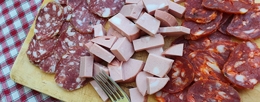
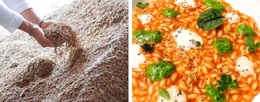
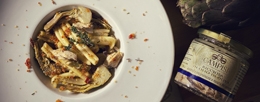

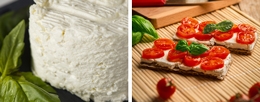
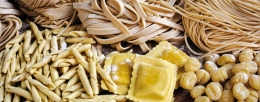

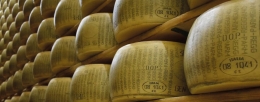
.jpg)
